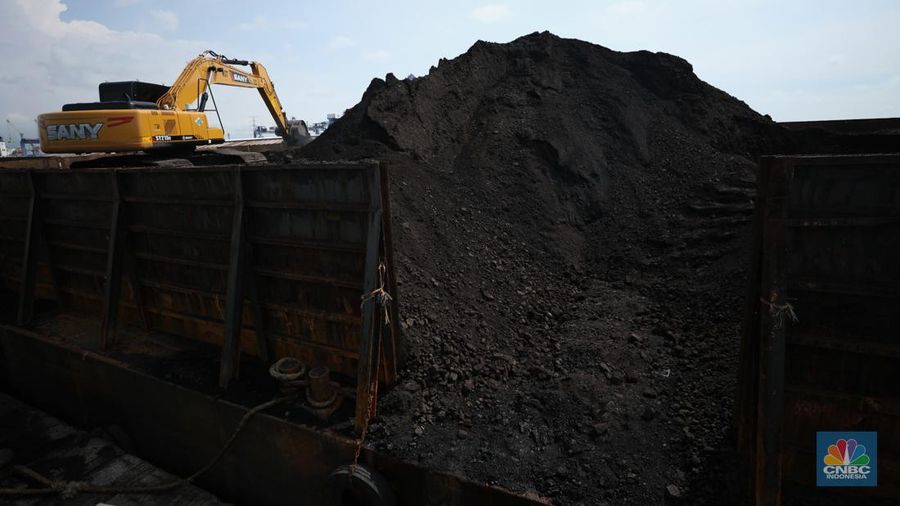
Jakarta – Coal prices fell 3.77% last week in line with easing market panic regarding supply. However, the price of black sand is estimated to still move in the range of US$ 400 this week due to the drought problem in China.
In the last trading last week, Friday (26/8/2022), the price of contract stone on the ICE Newcastle market closed at US$ 427 per ton.
The price rose 3.45%. The strengthening on Friday broke the negative trend of coal that lasted from Tuesday-Thursday last week.
In a week, coal prices fell 3.77% point-to-point. Last week’s decline was a reversal from the impressive record of the previous two weeks. Coal prices rose 10.11% in the last two weeks and flew 16.22% in the previous three weeks.
In a month, the price of coal is still sloping 2.95% while in a year it is still up 153.41%.
Bank Mandiri Industry Analyst Ahmad Zuhdi estimates that coal prices will move in the range of US$ 410 per ton this week.
Fears of a recession will depress future movements in coal prices amidst high demand from a number of countries.
“The driving factor is the increase in global demand, including China and several European Union countries that had experienced a heatwave. The demand in the European Union damaged the market. In the end, global prices that should not have increased were raised because there was demand running there,” said Zuhdi,, to CNBC. Indonesia.
The demand for coal prices from China is estimated to remain high in line with the increasing use of electricity due to the heat wave. Drought and heat are now spreading to a number of areas in China such as Jiangsu, Anhui, Hubei, Zhejiang, Jiangxi, Hunan, Guizhou, Chongqing, Sichuan, and Tibet.
Drought also reduces the discharge of the Yangtze River, thereby reducing the electricity capacity generated by hydropower. The dryness of the Yangtze River has not only made tens of thousands of Chinese citizens short of water supply but many companies have also shut down operations due to electricity shortages.
The Yangtze River which flows from the south of Sichuan to the west of Hubei is one of the main sources of electricity generation in China. Hydropower contributes to 7.7% of the electricity supply in the Bamboo Curtain country while coal is around 67.4%.
The hydroelectric power plant in Sichuan Province, which has been responsible for 21% of the hydropower supply in China, is now only able to produce 50% of its capacity. With reduced hydropower capacity, China is turning to coal again.
The increase in electricity consumption due to the heat wave caused the burning of coal plants in China in the first two weeks of August to reach 8.16 million per day. This figure is up 15% compared to the same period last year.
China’s largest mining company, Sichuan Coal Industry Group, has been increasing coal production by 15,000 tons per day since mid-August to meet supply at the plant.
Meanwhile, Sichuan Guang’an Power Generation, which is Beijing’s largest coal plant, has increased electricity production by 170%. In August this year, electricity capacity is estimated to increase by 313% (year on year/yoy).
“The reduction in hydroelectric power has forced China to rely on coal again for its electricity supply. Electricity use will continue to soar if the weather conditions continue to persist,” said Guotai Jun’an Securities, quoted by CNN.
In line with China, Germany is also still struggling with the issue of energy supply due to the drying up of the surface of the Rhine River.
Reporting from Reuters, the German government is now even worried that plans to re-operate their coal plants do not go according to plan because coal shipping traffic through the Rhine River is disrupted.
‘Due to reduced domestic shipping traffic, the supply of coal is reduced. Additional storage in southern Germany may not be fully filled this winter,” the German government document said, as quoted by Reuters.
The power plant at Moorburg, operated by Vattenfall, is unlikely to be operational again due to technical and economic problems. The Moorburg coal-fired power plant located in Hamburg is one of Germany’s most modern plants but has ceased operations in the summer of 2021. Some parts of the plant are then taken up for other purposes, such as hydrogen generation.
“Some parts (of the power plant) have been removed and sold,” said Robert Wacker, one of the directors of Moorburg, as quoted by France24.
It was reported that Deutsche Welle, the Heyden coal plant in Petershagen, near Hanover is scheduled to resume operations today, Monday (29/8/2022). A number of plants will also be restarted in the next few weeks to compensate for the gas reduction.
However, everything is very dependent on the supply of coal. Currently, only one coal plant is operating, namely Mehrum.




